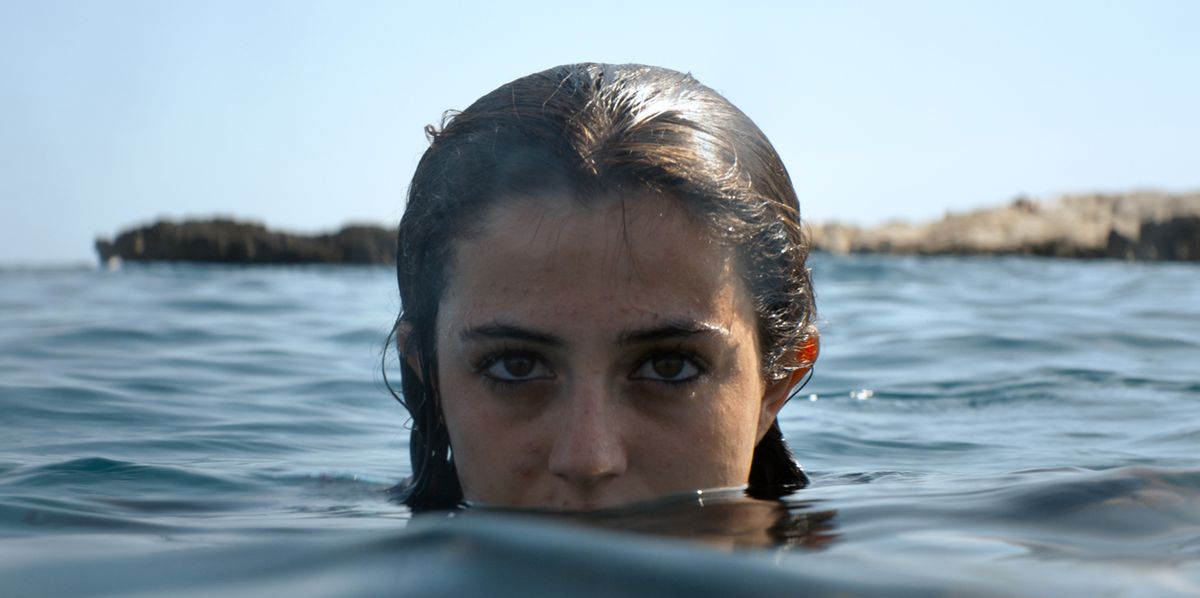Cannes hosts the world premiere of the second film by Elena Martín, the director of ‘Julia Ist’, who immerses herself in the complex psychology of a woman who has been the victim of sexual repression.
‘Creatura’ represents an unquestionable step forward in the filmography of Elena Martín Gimeno, especially if it is valued the courage of the young filmmaker when it comes to exploring not only a theme such as female sexual desire –strewn with taboos and prejudices– but above all a slippery, elusive cinematographic language. While in her debut feature, ‘Julia Ist’, the Catalan director opted for an elliptical naturalism with well-recognizable coordinates (in the wake of Mia Hansen-Løve), in ‘Creatura’ an interest in exploring the limits of a physical cinema can be perceived , especially when the sexual scenes are intertwined with the couple’s drama. Giving up any fantasy of absolute control, Martín Gimeno –who pulls the strings of the film in front of and behind the camera– builds scenes that, through the force of the gesture, invoke something uncontrollable, something that can be placed at the limits of reason. .
In his memorable contribution to the Movie Mutations project, the American critic Kent Jones reflected on the concept of mise-en-scène by describing two supposedly antithetical film models. In the first, the most solid and traditional, “direction consisted of a kind of external, organizational force deployed on the action.” While, in the second, more volatile and modern, “The direction would be a matter of commitment to the life of the film; not the life captured by the film, but the living matter created by the confluence of the camera, reality and montage”. According to Jones, it was the New York filmmaker John Cassavetes who brought this model of organic, verista and vitalist cinema to a point of excellence. Elena Martín Gimeno, in her growth as a director, aspires to continue this path.
The young Barcelona filmmaker decides to follow this visceral film path to account for Mila’s sexual traumas, who are played at different ages by the little Mila Borrà, the adolescent Clàudia Dalmau and Martín Gimeno herself, who occupies the center of the screen in an exercise in happy exhibitionism that brings to mind the work of Lena Dunham or Vincent Gallo. Mila suffers from the inability to find herself in sexual encounters with her partner, Marcel (Oriol Pla), a man with an intellectual and progressive appearance who, despite his willingness to understand, does not know how to react to the confusion that grips him. to your couple. As in Cassavetes, but in an even more abstract register, in the manner of Michelangelo Antonioni, ‘Creatura’ does not stop blooming and withering in search of the representation of a deep malaise. The thick shadow of Sigmund Freud hovers over the images of a film that focuses, first ambiguously and then more transparently, on the idea of trauma.
Despite the fact that ‘Creatura’ moves smoothly between Mila’s “ages”, the film cannot escape its three-act structure. In the first, the most mysterious and radical, focused on the adulthood of the protagonist, the psychological torment is transformed into hives that spread over Mila’s body starting from her vaginal area. The long shadow of David Cronenberg can also be seen in nightmares that evoke previous dangers of a natural and atavistic world., although Martín Gimeno does not finish entering the territory of the monstrosity. Then, the second part, focused on Mila’s adolescence, moves from a purely physical cinema –with magnetic slow cameras of young bodies frolicking in the sun or under neon lights– to a more naturalistic one; It is here that the film shows the weight of a patriarchal context in which the masculine sexual drive is praised and the manifestations of the feminine libido are censored. The appearance of erotic video chats and the representation of Mila’s fantasies reveal the intensity of her desire, although the film chooses not to immerse itself fully in the swamp of the first sexuality. ‘Creatura’ should not be seen as the Spanish response to the controversial work of the French Catherine Breillat in works like ‘Una chica de verdad’ or ‘À ma soeur!’.
Lastly, the third block of ‘Creatura’, focused on Mila’s childhood, circulates along the path of paradox, in the sense that, on a thematic level, Martín Gimeno triumphs in his desire to put his finger on the sore – in this case, on sexual awakening in childhood, a taboo that represents a deep social scourge–, while, on a formal level, the film gradually limits its approach to the ideas of physicality and monstrosity. It is understandable that, given the necessary modesty imposed by working with a child-actress, ‘Creatura’ moves towards elliptical naturalism. Less excusable is the explicit character that the adult Mila’s encounters with her boyfriend and her father (played by Alex Brendemühl) take on throughout the film. The promising study of the physical and psychological bewilderment of these male figures is diluted when the dialogues arrive to incorporate a didactic tone to the scenes. Thus, placing himself on the border between a cinema of ambiguity and another of pedagogical roots, Martín Gimeno produces a film that manages to put the viewer against the wall of his own prejudices, while opening a path of exploration of filmic physicality that invites to look forward to the future work of the young filmmaker.
To become aware of the consequences of the repression of sexuality
Data sheet
Address: Elena Martin Distribution: Elena Martín, Oriol Pla, Àlex Brendemühl, Clara Segura, Clàudia Dalmau Country: USA Year: 2023 Release date: 8–9-2023 Gender: Drama Script: Elena Martin, Clara Roquet Duration: 112 min.
Synopsis: After moving in with her partner to a new home, Mila realizes that her loss of desire lies within herself. From there, she begins a journey in which she revisits her experiences from her childhood and adolescence in hopes of reconciling herself with her own body.
Source: Fotogramas
Emily Jhon is a product and service reviewer at Gossipify, known for her honest evaluations and thorough analysis. With a background in marketing and consumer research, she offers valuable insights to readers. She has been writing for Gossipify for several years and has a degree in Marketing and Consumer Research from the University of Oxford.

